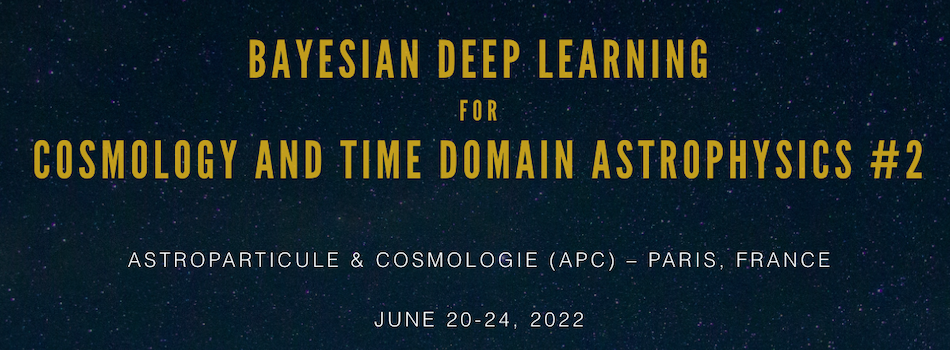Orateur
Description
A pressing question in the field of cosmological structure formation is how the long-term assembly and evolution of baryonic matter occurs in galaxies. Galaxies take different pathways to assemble their stellar mass, signatures of which can be derived from galaxy star formation histories via stellar population synthesis (SPS) modeling. Today, we are approaching the age of trillion-galaxy surveys (DECaLS, DESI, Rubin surveys) containing photometry and spectroscopy (describing a given galaxy’s spectral energy distribution, or SED). It is imperative that fast and efficient methods — beyond traditional Bayesian MCMC methods — are built to constrain galaxy parameters such as stellar age, metallicity, dust attenuation, stellar mass, and star formation rates for these large samples. The combination of machine learning (ML) and simulation-based inference (SBI) is a promising path forward. SBI allows a) efficient analysis of galaxy SEDs and inference of galaxy parameters with physically interpretable uncertainties; and b) amortized calculations of posterior distributions of said galaxy parameters at the modest cost of a few galaxy fits with MCMC methods. In this work, we show initial results from our SBI analysis using the Python package `sbi’ to perform Sequential Neural Posterior Estimation (SNPE) to obtain 1- and 2-parameter SED fits. In our proof-of-concept analysis on simulated galaxy photometry and spectroscopy, we demonstrate that SBI - with its combination of fast and amortized posterior estimations - is capable of inferring galaxy stellar masses and metallicities with accuracy and precision comparable to traditional inverse-modeling with MCMC. We compare SBI to Bayesian Neural Network-based inference of these parameters. We also demonstrate the efficacy of our framework with photometry of cluster galaxies and gravitationally lensed systems; observations of these galaxies in the next decade are bound to help solve the question of stellar mass assembly.

